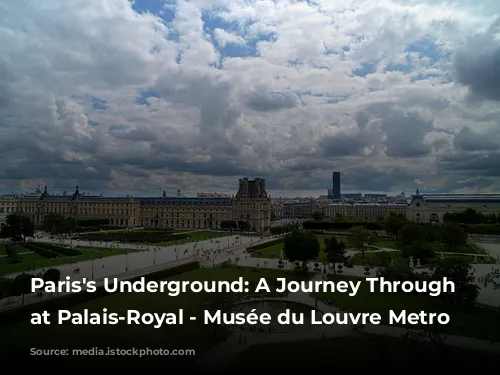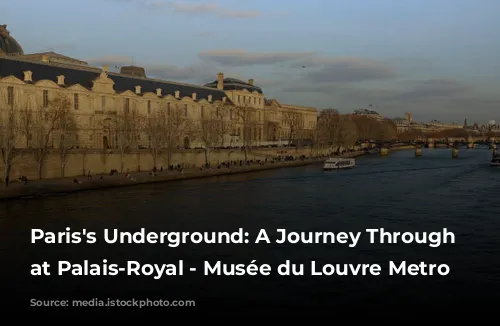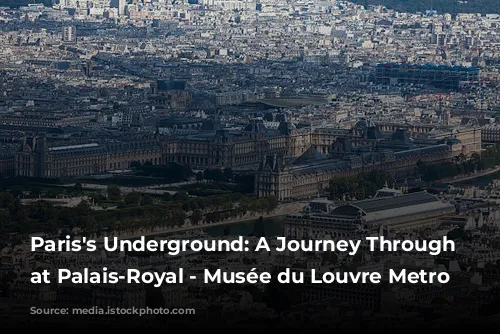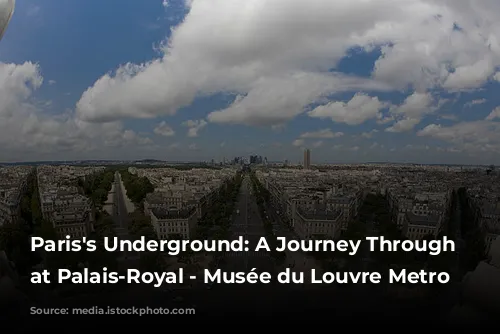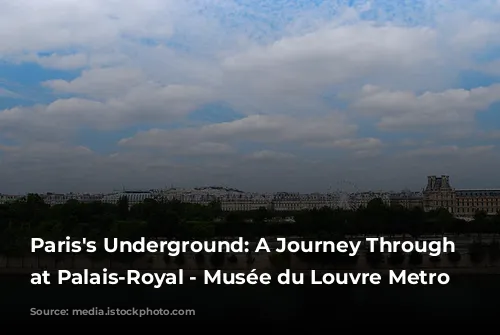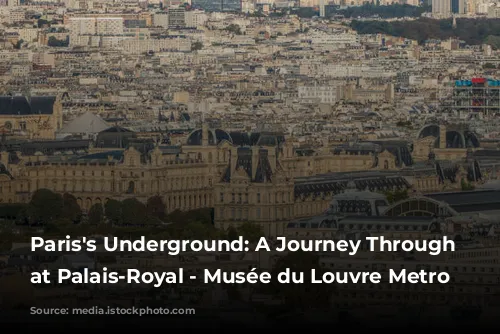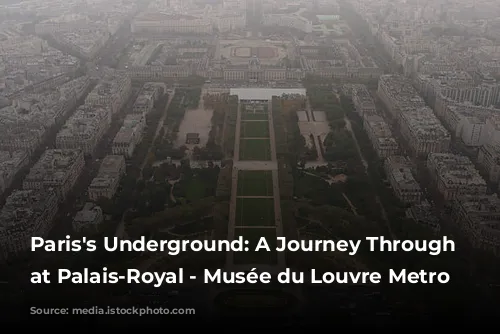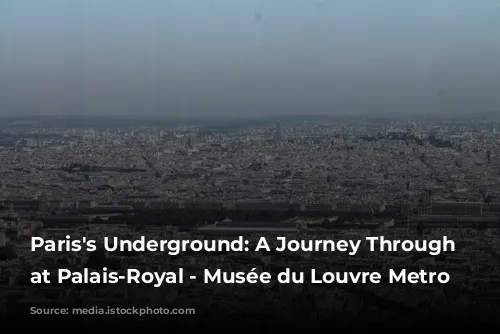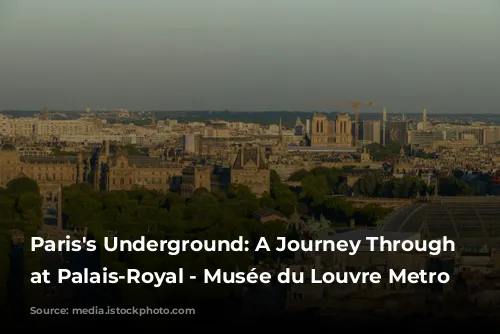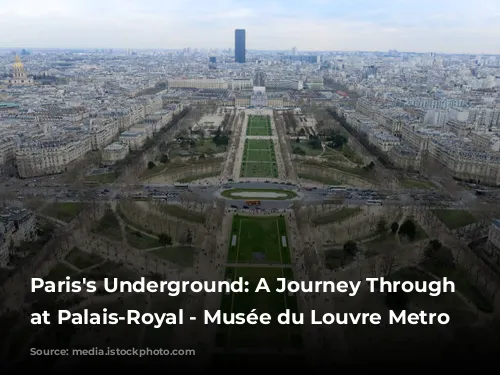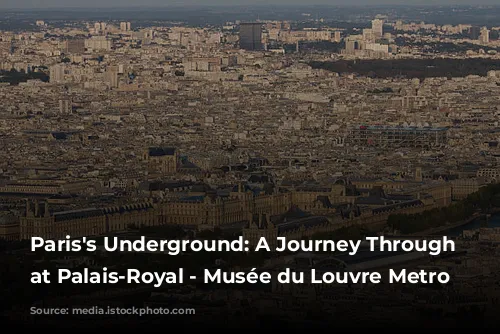Dive into the history of Parisian transportation at this bustling underground hub! The Palais-Royal – Musée du Louvre metro station, nestled beneath the iconic Palais-Royal square, serves as a vital connection point for lines 1 and 7 of the Paris Metro system. Located between the Louvre Palace and the renowned Louvre Museum, this station offers a glimpse into the architectural evolution of Paris’s underground.
From Humble Beginnings to Modern Transformation
This station has witnessed a remarkable transformation over the years. Initially opened in 1900 alongside the first section of line 1, it was simply called “Palais-Royal,” reflecting its proximity to the opulent palace of the same name. The station expanded in 1926 with the addition of line 7, making it a convenient interchange point.
In the 1970s and 1980s, the station underwent its first major makeover. The distinctive “Mouton-Duvernet” style was introduced, characterized by horizontal rows of vibrant orange ceramic tiles. This iconic design became synonymous with the Parisian metro experience.
However, the station’s name changed in 1989 to “Palais-Royal – Musée du Louvre.” This change highlighted the station’s proximity to the new main entrance of the Louvre Museum, featuring the renowned glass pyramid designed by I.M. Pei. This change distinguished the station from the “Louvre – Rivoli” station, which served the museum’s historical colonnade entrance.
A Journey Through Design and Art
This station is not just a transportation hub; it’s a testament to Parisian art and design. From the “Mouton-Duvernet” ceramic tiles to the “Andreu-Motte” style, the station’s aesthetic evolves over time.
In 2009, the station’s platforms were elevated for automatic operation. This modernization also brought the addition of platform screen doors in 2010. Further renovations in 2014 saw the return of the classic white beveled tiles, reflecting the “un métro + beau” (a more beautiful metro) program of the RATP.
Andreu-Motte’s signature orange ceramic tiles adorn the line 7 platforms. In 2018, these tiles were applied to the bench seats, creating a more cohesive design. This change, however, deviated from the Andreu-Motte style’s original vision, creating a contrast between the seats and the white beveled tiles of the passageways.
Beyond its design, this station showcases art in various forms. The “Kiosque des noctambules” (Night Owls’ Kiosk) is a contemporary artwork that adorns one of the station’s entrances. Created by artist Jean-Michel Othoniel, it features two Murano glass domes, one symbolizing day, the other night. This colorful and unexpected piece adds a unique touch to the classic surrounding environment.
Another artistic treasure resides within the station’s passageway. The “La Pensée et l’Âme huicholes” (The Huichol Thought and Soul) mural celebrates the collaboration between the Mexico City and Paris metro systems. This intricate mosaic, composed of millions of tiny beads, represents the indigenous Huichol culture.
The station also boasts a historic connection to the world of cinema. A scene from the 1967 classic “Le Samouraï” (The Samurai) directed by Jean-Pierre Melville, featuring actor Alain Delon, was filmed within the station’s walls.
A Place of Connection and Discovery
Palais-Royal – Musée du Louvre is more than a mere metro station. It’s a place where history, art, and contemporary design converge. Whether you’re a Parisian resident or a visitor to the city, this station offers a captivating glimpse into the city’s past and present. So, the next time you find yourself navigating the Paris Metro, step off at Palais-Royal – Musée du Louvre and discover a hidden gem within the depths of the city.
